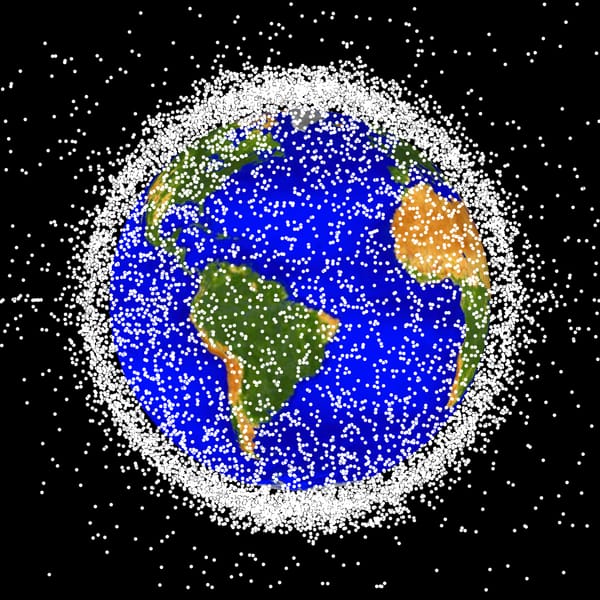Echoes of Armageddon: Why We’ve Stopped Fearing Nuclear War and Why That Should Worry Us
Once, nuclear war haunted films, protests, and public imagination. Today, the fear has faded—but the threat hasn’t. This piece explores how we lost our nuclear anxiety, why that might be dangerous, and what we stand to forget if we stop paying attention.

In the 1980s, nuclear war felt imminent. It was the stuff of headlines, civil defence drills, and searing cultural artefacts like Threads and The Day After. Today, despite rising global instability and more nuclear-armed actors than ever, that visceral fear has largely vanished. This article explores why public consciousness has drifted away from the shadow of Armageddon, and whether that complacency puts us at greater risk.
There was a time, not so long ago, when the idea of nuclear war sat uncomfortably close to the surface of public life. It haunted our screens, slipped into classroom drills, and hovered at the edge of every political broadcast. In the UK, Threads offered an unflinching portrayal of social collapse in the wake of a nuclear strike on a military base not far from Sheffield. Across the Atlantic, The Day After reached more than 100 million Americans, its grim visuals prompting public debate and even a response from the White House, and was aired in the Soviet Union. These weren’t just works of fiction; they were cultural reckoning points. Even the bleak tenderness of Raymond Briggs’s When the Wind Blows, with its elderly protagonists shuffling through irradiated routines, managed to confront audiences with a sense of tragic inevitability. The fear was everywhere, and it felt justified.
What gives that period a deeper chill, looking back, is how close the world actually came to the brink, often without the public ever knowing. In November 1983, NATO conducted Able Archer, a command post exercise simulating the lead-up to nuclear war. It was designed to test the escalation procedures, but the Soviets believed it might be real. Mistaking the simulation for a potential first strike, they raised their alert levels and quietly prepared for the worst. For several tense days, the world edged closer to catastrophe, not through malice but through misreading. And yet almost no one knew. The incident remained obscure until it was finally acknowledged in 2015, when declassified US intelligence confirmed just how perilous the moment had been. In retrospect, it was one of the closest brushes with nuclear war during the Cold War, and it passed with barely a flicker of public awareness.
That atmosphere of constant threat wasn’t confined to fiction or hidden intelligence cables. In the late 1970s, the UK government’s Protect and Survive campaign offered a chillingly practical guide to enduring a nuclear attack, complete with advice on how to build an improvised fallout shelter using interior doors, sandbags, and a mattress. The pamphlet was meant for mass distribution in the event of crisis, and its accompanying public information films, with their clipped narration and stilted animations, have since become some of the most haunting broadcasts ever produced by a democratic state. They told people to whitewash their windows, stockpile tinned food, and prepare to dispose of the bodies of loved ones who didn’t make it. It was surreal, bureaucratic, and terrifying, all at once. But it also reflected something honest: a recognition, however awkward, that the unthinkable was thinkable, and that it might come with very little warning.
Today, the silence is more striking than the fear ever was. The weapons haven’t gone away. In fact, more nations now possess them, and in many cases, the command and control chains are less transparent, more fragile. Yet you rarely hear nuclear war discussed outside of academic circles, security forums, or the occasional headline engineered for shock value. It has slipped from public imagination, displaced by more immediate, more relatable crises. Terrorism, pandemics, climate collapse, and artificial intelligence. These feel present and tangible. Nuclear conflict, by contrast, feels like a period piece.
That isn’t to say the rhetoric has vanished. In the past decade, we’ve seen a resurgence of nuclear posturing in political speech and state media. Vladimir Putin has unveiled so-called “next-generation” systems, from the Sarmat ICBM nicknamed “Satan II” by Western media, to the Poseidon underwater drone, an autonomous weapon system designed to deliver a radioactive tsunami to enemy coastlines. These announcements, paired with frequent reminders that Russia is a nuclear power, have featured heavily in the geopolitical theatre surrounding Ukraine and NATO expansion. North Korea continues its missile tests, parading its arsenal on national television. Iran’s nuclear ambitions remain a persistent source of speculation despite the recent strikes by Israel and the U.S. There’s plenty of noise.
But it doesn’t land the same way it once did. There is bluster, yes. There are bold claims and speculative think pieces. But there isn’t fear. Not the kind that shaped generations. Not the kind that made families dig fallout shelters or drove schoolchildren under their desks. The tone has changed, from existential dread to background static. Nuclear weapons have become part of the geopolitical furniture. Familiar. Abstract. Distant.
But that perception might be dangerously out of step with reality. I’ve recently been reading two stark reminders. Annie Jacobsen’s Nuclear War: A Scenario, published in 2024, walks through the plausible chain of events that could lead, minute by minute, from miscommunication to mass extinction. Mark Lynas’s Six Minutes to Winter is raw and unflinching, less a warning than a blunt admission of what we’ve all chosen to ignore. Both books paint different pictures, but the message is similar: the threat never really left. It just got quieter.
Jacobsen’s book is meticulously researched and reads like a thriller, which makes it even more unsettling. She traces a fictional yet entirely plausible sequence of events: diplomatic missteps, misinterpreted radar data, doctrinal triggers, and automated escalation protocols. It doesn’t rely on a Hollywood villain pushing a red button. The terror lies in the machinery we’ve built and the logic that underpins it. Once the gears turn, there are very few ways to slow them down.
Lynas, by contrast, takes the reader straight to the aftermath. There’s no geopolitical build-up, no moment of decision. Just the detonation, and then the horror. His focus is on the reality of what would follow: the collapse of food systems, mass burns and radiation sickness, societal fracture, and the long dark of nuclear winter. It’s not speculative fiction. It’s a wake-up call. One of the most compelling points Lynas makes is that while the physical risk may be greater now than it has been in decades, we’re thinking about it less than ever.
That point hit hard. Growing up, or even just becoming historically aware of the Cold War era, meant absorbing the ambient dread of annihilation. It wasn’t abstract. It was mapped onto the world. You knew what “four-minute warning” meant. You could picture the mushroom cloud on the horizon. You understood that deterrence was a delicate, dangerous game, built on the logic of Mutually Assured Destruction - MAD by name and by nature. Yet, for all its fear and trauma, that cultural consciousness served a function. It made the unthinkable feel close enough to matter.
The end of the Cold War brought a kind of psychic relief. The Soviet Union collapsed. Arms control treaties were signed. Stockpiles shrank. NATO doctrine adjusted. The old binaries dissolved, and in their place came a new global order, messy but ostensibly less likely to end in fire. Nuclear anxiety faded. Pop culture turned to terrorism, pandemics, or climate doom. The flash of light and the long silence became a memory.
But if you look closely, the risks haven’t gone away. They’ve multiplied. There are now nine nuclear-armed states as of 2025: the United States, Russia, the United Kingdom, France, China, India, Pakistan, North Korea, and Israel (whose arsenal remains officially undeclared but widely acknowledged). Some, like India and Pakistan, sit on hair-trigger flashpoints where history, nationalism, and unresolved borders collide with alarming regularity. North Korea remains a wildcard: its arsenal growing in size and sophistication, paired with a regime that thrives on unpredictability. Iran looms on the edge of capability, its nuclear programme the subject of fragile diplomacy, proxy conflict, and regional instability. While China’s doctrine has traditionally been one of minimum deterrence, its arsenal is expanding, and its command and control posture remains opaque.
Meanwhile, the guardrails that once helped contain the superpowers are steadily eroding. Many of the cornerstone arms control treaties that defined the Cold War and its aftermath have either expired or been abandoned. The Anti-Ballistic Missile (ABM) Treaty was scrapped in 2002. The Intermediate-Range Nuclear Forces (INF) Treaty collapsed in 2019. The Open Skies Treaty, which allowed mutual surveillance flights to build trust, has been exited by both the US and Russia. Even the New START agreement, the last major bilateral treaty limiting deployed strategic nuclear weapons, is hanging by a thread, extended once to 2026 but with no successor in sight. Dialogue between Washington and Moscow has withered, leaving fewer checks on arsenal expansion, posture shifts, and miscalculation.
What’s left is a more volatile landscape: more warheads, more delivery systems, more actors, and fewer rules.
Russia has returned to nuclear signalling as a core part of its geopolitical strategy. The war in Ukraine has reintroduced nuclear language to daily headlines, with officials and public mouthpieces in Moscow reminding the world of their capabilities. And underneath it all lies a dangerous shift in how these weapons are framed. The language of “tactical” nuclear weapons, of battlefield use, of limited exchanges, is becoming more common in strategic documents. But is there such a thing as a limited nuclear war? Once one crosses that line, what remains to hold the rest back?
Technological change has also complicated the picture. As early warning systems become more reliant on software, algorithms, and satellite feeds, the possibility of misinterpretation grows. As hypersonic weapons reduce response times, the space for rational decision-making narrows. As dual-use space infrastructure and cyber operations blur military lines, it becomes harder to distinguish a conventional strike from a precursor to something worse. These are not just theoretical concerns. They are structural pressures baked into the modern deterrence landscape.
Yet, the public conversation has gone quiet. Civil defence is barely mentioned. Political debates rarely touch on nuclear policy. Films and television avoid it. Even in educational settings, the nuclear age is often a historical chapter, not a contemporary concern. The result is a widening gap between real risk and public awareness. That gap matters. During the height of the Cold War, public pressure played a role in driving arms control. Movements like the Campaign for Nuclear Disarmament (CND), the Nuclear Freeze campaign, and global protests in the 1980s helped shift political priorities. Awareness translated into activism, and activism into policy.
Today, that mechanism feels broken. The public is uninformed, or at least unengaged. The media gives more attention to tech billionaires’ opinions about AI than to nuclear modernisation programs. Policymakers operate with little scrutiny. Defence reviews are published with barely a murmur from civil society. And without that feedback loop, there’s less resistance to the subtle drift toward normalising the idea that nuclear weapons might be usable, containable, even.
It’s not that the threat has gone unnoticed in all quarters. Strategic communities, military planners, and security researchers are deeply aware of the shifting terrain. But the disconnect between expert discourse and public understanding is vast, and that matters when a crisis comes. Democracies require informed publics to hold power to account. If we’ve chosen not to look, we can hardly protest when decisions are made in darkness.
The irony is that we’re living in a time that’s arguably more dangerous than the Cold War, at least in terms of volatility. During the Cold War, the bipolar structure of superpowers created a kind of brutal predictability. Today, the world is multipolar, ideologically fragmented, and full of unstable dynamics. There are more actors, more triggers, and fewer established norms. At the same time, social media and real-time news cycles amplify tension, reduce decision-making time, and increase the chance of escalation based on misinformation. The four-minute warning might feel like ancient history, but we’re not necessarily safer without it.
I’m not suggesting we go back to paranoia. But maybe we need to regain some clarity. The clarity that comes from understanding what’s at stake. The clarity that comes from remembering what these weapons do, not just in abstract kiloton yields, but in shattered cities, irradiated farmland, and silent skies. That clarity used to be part of how societies thought about the future. It wasn’t healthy, necessarily, but it was honest.
It’s not about despair. It’s about recognition. Recognition that nuclear weapons are still here. That they still matter. The decisions made in foreign ministries and command centres have consequences far beyond the strategic chessboard. That treaties, diplomacy, and norms aren’t abstract formalities but vital brakes on catastrophe.
Reading Jacobsen and Lynas reminded me of something I didn’t realise I’d forgotten. The feeling, not of fear, exactly, but of awe. Of knowing that civilisation sits on the edge of something we’d rather not think about, and that forgetting doesn’t make it go away. If anything, it makes it more likely.
We don’t need to live in terror, but we do need to remember because the risks are still there, lurking in fragile alliances, ageing arsenals, and strategic miscalculations. If we no longer see the shadow, it might simply be because we’ve stopped looking.





